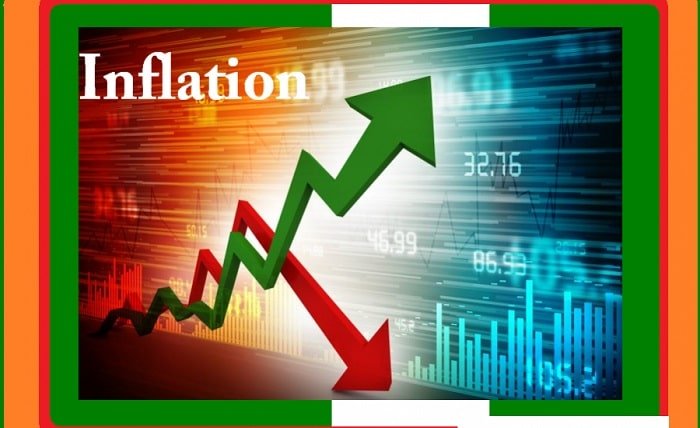Introduction: Rajkotupdates.News : Us Inflation Jumped 7.5 In In 40 Years
Inflation is a critical economic indicator that affects the cost of living, consumer purchasing power, and overall economic stability. Recently, the United States has experienced a significant increase in inflation rates, with a notable jump of 7.5% over the span of 40 years. This rise in inflation has sparked discussions and concerns about its causes, effects on the economy, and implications for individuals and businesses alike.
What is Inflation?
Inflation refers to the rate at which the general level of prices for goods and services rises over time, leading to a decrease in purchasing power. It is typically measured as an annual percentage increase in the Consumer Price Index (CPI), which tracks the prices of a basket of goods and services commonly purchased by households. Inflation can be caused by various factors, including increased demand, supply chain disruptions, changes in monetary policy, and external economic shocks.
US Inflation Trends: A 40-Year Perspective
The recent jump of 7.5% in US inflation over 40 years marks a significant deviation from historical trends. To understand the magnitude of this increase, it’s essential to examine inflation rates over different periods and the factors contributing to these fluctuations:
- Historical Context: Over the past four decades, the US has experienced varying inflation rates, influenced by economic cycles, policy decisions, and global events. Periods of high inflation, such as the 1970s and early 1980s, were characterized by double-digit inflation rates due to oil price shocks and expansionary fiscal policies.
- Recent Trends: Inflation remained relatively low and stable in the years following the 2008 financial crisis, aided by central bank interventions and subdued global commodity prices. However, recent years have seen inflationary pressures intensify, driven by factors such as supply chain disruptions, rising energy costs, and increased consumer demand post-pandemic.
Causes of the Recent Inflation Surge
Several factors have contributed to the recent surge in US inflation rates:
- Supply Chain Disruptions: The COVID-19 pandemic disrupted global supply chains, causing shortages of raw materials, components, and finished goods. These disruptions led to supply constraints and increased production costs, which were passed on to consumers through higher prices.
- Rising Energy Costs: Fluctuations in global energy markets, including higher oil and gas prices, have contributed to increased production and transportation costs for goods and services. Higher energy costs impact consumer spending and business operations, further exacerbating inflationary pressures.
- Increased Consumer Demand: As economies reopen and consumer confidence rebounds, there has been a surge in consumer spending on goods and services. This surge in demand has outpaced supply, leading to price increases as businesses struggle to meet consumer expectations.
- Monetary Policy: Central banks, including the Federal Reserve, have implemented accommodative monetary policies, such as low interest rates and quantitative easing, to support economic recovery. While these measures stimulate growth, they can also contribute to inflationary pressures by increasing money supply and aggregate demand.
Economic Implications of High Inflation
High inflation rates can have wide-ranging implications for the economy:
- Purchasing Power: Inflation erodes the purchasing power of consumers, as the same amount of money buys fewer goods and services over time. This can impact standards of living, particularly for fixed-income individuals and households.
- Cost of Borrowing: Higher inflation may lead to higher interest rates, making borrowing more expensive for businesses and consumers. This can dampen investment and consumption, potentially slowing economic growth.
- Business Operations: Businesses face higher input costs, including wages, raw materials, and energy, which may squeeze profit margins. Some businesses may pass these costs on to consumers, contributing to further inflationary pressures.
- Income Inequality: Inflation can exacerbate income inequality, as low-income households may struggle to keep pace with rising prices compared to higher-income groups. This can widen economic disparities and affect social stability.
Managing Inflationary Pressures
Addressing high inflation requires a multifaceted approach:
- Monetary Policy: Central banks can adjust interest rates and monetary policy tools to manage inflation expectations and stabilize prices. Gradual rate increases and tightening monetary conditions may be necessary to curb excessive inflation.
- Fiscal Policy: Governments can implement fiscal measures, such as taxation and public spending, to support economic stability and mitigate inflationary pressures. Targeted investments in infrastructure and education can enhance productivity and supply capacity.
- Supply Chain Resilience: Enhancing the resilience of supply chains through diversification, digitalization, and risk management strategies can reduce vulnerabilities to future disruptions and stabilize prices.
- Consumer Education: Educating consumers about inflationary trends, budgeting strategies, and financial planning can empower individuals to make informed decisions and mitigate the impact of rising prices.
Looking Ahead: Future Outlook
The outlook for US inflation remains uncertain, influenced by ongoing global economic dynamics, policy responses, and external shocks. Monitoring key economic indicators, such as employment trends, wage growth, and commodity prices, will be crucial in assessing inflationary risks and informing policy decisions.
As policymakers, businesses, and individuals navigate the challenges posed by high inflation, proactive measures and prudent decision-making will be essential in promoting economic resilience, maintaining price stability, and safeguarding long-term prosperity.
Conclusion: Navigating Inflationary Challenges
The recent jump of 7.5% in US inflation over 40 years underscores the complexity and significance of inflationary dynamics in today’s economy. Understanding the causes, implications, and management strategies of inflation is essential for policymakers, businesses, and individuals alike.
